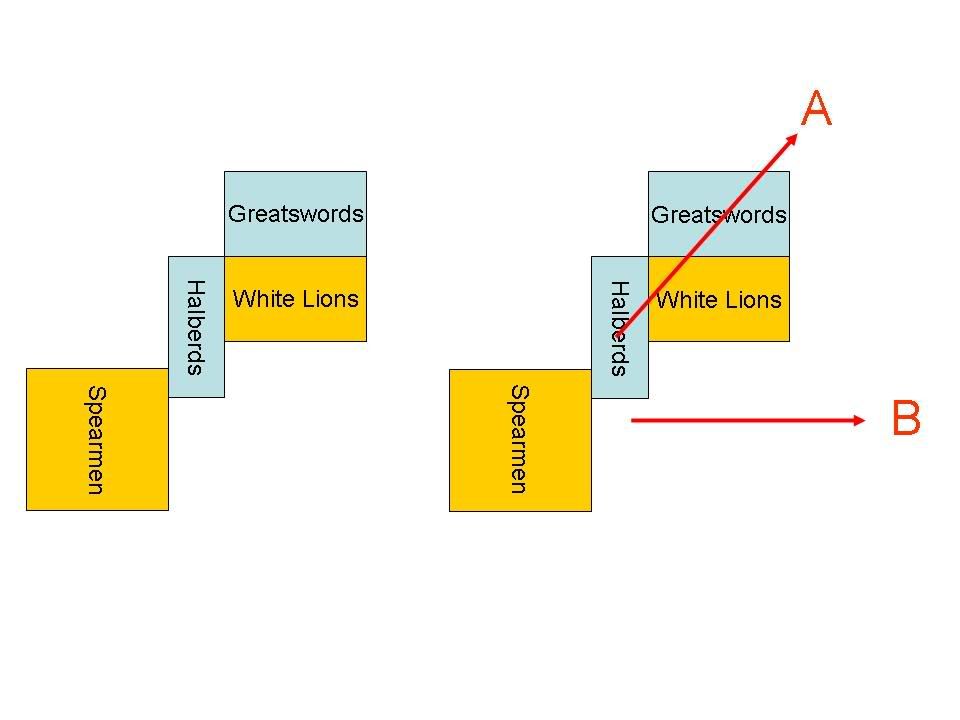Hi guys,
A flee direction query that came up in my battle today.
This was the second round of a combat. The previous turn the Great Swords and Halberdiers had charged my White Lions. This turn my spear block had charged the Halberd detachment in the rear. As per the diagram below.
![Image]()
The High Elves won the combat and the Halberds failed their break test. As the Spearmen were the largest unit then they would in theory be running way through the White Lions and Greatswords. However, fleeing through part of the combat the unit was involved in didn't seem right so we played it that instead the halberds slid down and fled along the back of the White Lions.
Which direction should they have fled in?
A flee direction query that came up in my battle today.
This was the second round of a combat. The previous turn the Great Swords and Halberdiers had charged my White Lions. This turn my spear block had charged the Halberd detachment in the rear. As per the diagram below.

The High Elves won the combat and the Halberds failed their break test. As the Spearmen were the largest unit then they would in theory be running way through the White Lions and Greatswords. However, fleeing through part of the combat the unit was involved in didn't seem right so we played it that instead the halberds slid down and fled along the back of the White Lions.
Which direction should they have fled in?




